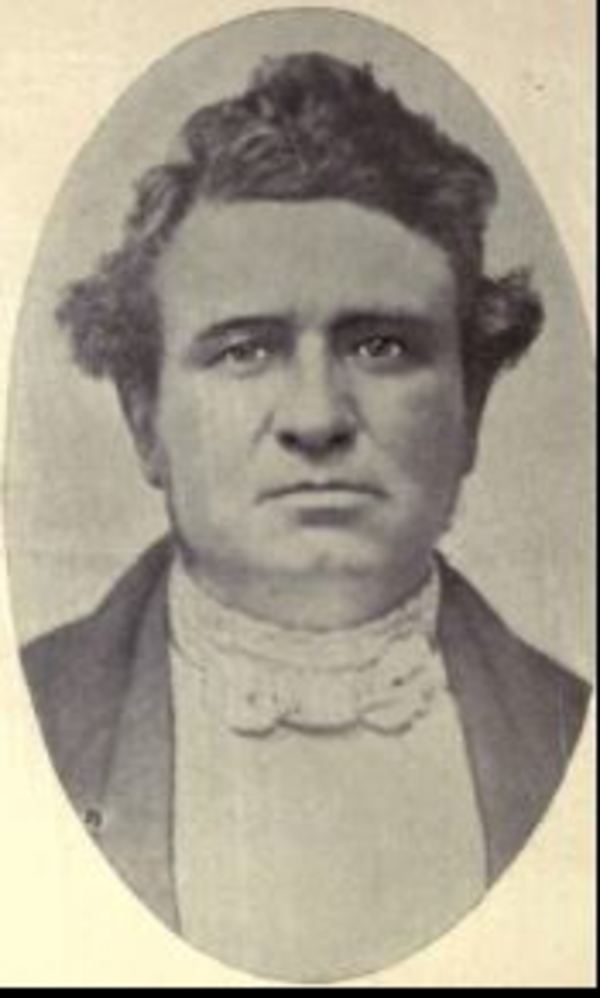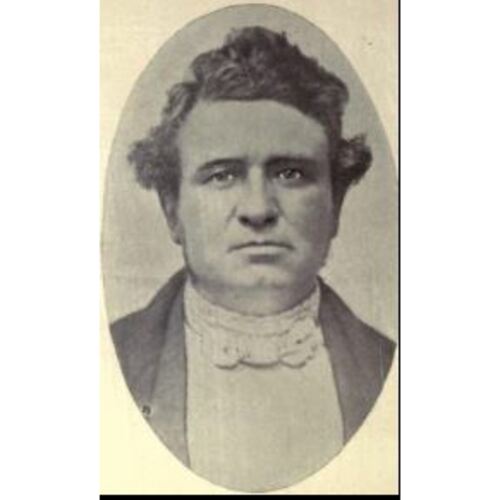
Source: Link
BLACKADAR, HUGH WILLIAM (the name is sometimes written Blackader, but he signed Blackadar), newspaper printer and publisher; b. 13 Jan. 1808 at Halifax, N.S., the only son of Hugh and Amy Blackadar; m. c. 18 Feb. 1835, Mary Sharpless, who died childless in 1839, and secondly, on 4 Oct. 1840, Sophia Coleman, by whom he had 11 children; d. 13 June 1863 at Halifax.
Born into a family of shipwrights and artisans working at the Halifax dockyard, Hugh William Blackadar became a printer’s apprentice in 1820 under John Munro, publisher of the Halifax Journal, a newspaper begun in 1781 by John Howe Sr. There is no record of Blackadar’s early activities in Halifax. In March 1835, however, he was called upon by the prosecution during Joseph Howe*’s libel trial to establish that Howe had published an allegedly slanderous letter in the Novascotian. When Blackadar failed to reply, doubtless out of sympathy for a fellow-publisher and liberal, Howe admitted the letter had been printed in his paper.
In July 1835 Blackadar established himself as an independent publisher with the purchase of the fledgling Weekly Mirror from John Bowes. The newspaper had a limited audience, however, and Blackadar did little to alter its bland format; the final edition appeared on 13 Jan. 1837, with the notice that it was being discontinued because of a paucity of subscribers.
In 1836 in partnership with John English, Blackadar had purchased the Acadian Recorder from Philip J. Holland, brother of the paper’s founder, Anthony Henry Holland*. The successful Blackadar-English association continued until the latter’s death in July 1857, when ownership passed to Blackadar; after 1863 the Recorder was published by his three sons. Although various people occupied the Recorder’s editorial chair, policy was controlled ultimately by Blackadar and English. Under their direction the Recorder continued the stand for liberal reform developed by the Holland brothers, becoming second only to Howe’s Novascotian in its independent editorial policy. Where the Hollands had maintained a platform of deliberate but discreet agitation, however, Blackadar and English became highly vocal in their support of Howe’s struggle to gain greater colonial autonomy. The Recorder also championed social progress; when in 1842 the Baptist Christian Messenger refused to print Howe’s controversial letters denouncing sectarian colleges, Blackadar, himself a Baptist, published them. Although such independent actions created many enemies, Blackadar and English consistently maintained a publication noted for the “fairness and impartiality” which they had advertised in their prospectus for the new Acadian Recorder on 14 Jan. 1837.
During the 1850s, however, the tone of the Recorder became somewhat conservative. The political patronage of the Liberal administration under responsible government alienated Blackadar, perhaps in part because he had been overlooked for the office of queen’s printer. Howe’s anti-Catholic campaign further estranged the Recorder, likely because English was Catholic. In any case, during Blackadar’s final years, the Recorder, although maintaining a liberal platform, denounced the vicissitudes of party politics.
In private life, Blackadar had little desire for public notice. Publishing was his only interest and until his final days he could be found setting type in the Recorder office. He was remembered as “a perfect Encyclopedia” of information on Halifax, its inhabitants, and its naval activities. It was not for himself, however, that Blackadar was ultimately remembered, but rather for the liberal tone and impartiality of his Acadian Recorder, qualities which lasted long after he had gone.
PANS, MG 5, Camp Hill Cemetery (Halifax), records, 1844–78; RG 32, 151, 18 Feb. 1835; 153, 3 Oct. 1840. Duncan Campbell, Nova Scotia in its historical, mercantile and industrial relations (Montreal, 1873). Tratt, “Survey of N.S. newspapers.” Acadian Recorder, 16 Jan. 1913. D. C. Harvey, “Newspapers of Nova Scotia, 1840–1867,” CHR, XXVI (1945), 279–301. J. S. Martell, “The press of the Maritime provinces in the 1830’s,” CHR, XIX (1938), 24–49. [J. Murray Beck, Charles St C. Stayner, and Peter B. Waite gave information and advice for the preparation of this biography. l.k.k.]
Cite This Article
Lois K. Kernaghan, “BLACKADAR (Blackader), HUGH WILLIAM,” in Dictionary of Canadian Biography, vol. 9, University of Toronto/Université Laval, 2003–, accessed April 4, 2025, https://www.biographi.ca/en/bio/blackadar_hugh_william_9E.html.
The citation above shows the format for footnotes and endnotes according to the Chicago manual of style (16th edition). Information to be used in other citation formats:
| Permalink: | https://www.biographi.ca/en/bio/blackadar_hugh_william_9E.html |
| Author of Article: | Lois K. Kernaghan |
| Title of Article: | BLACKADAR (Blackader), HUGH WILLIAM |
| Publication Name: | Dictionary of Canadian Biography, vol. 9 |
| Publisher: | University of Toronto/Université Laval |
| Year of revision: | 1976 |
| Access Date: | April 4, 2025 |



